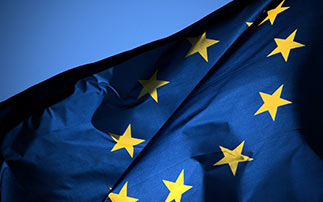In response to the consequences of the health crisis, the European Commission adopted in May 2020 a historic European recovery plan entitled “Next Generation EU“. Among the pillars of this plan, the REACT-EU (Recovery Assistance for Cohesion and the Territories of Europe) initiative, with approximately €47.5 billion of funds, complements the 2014-2020 programmes to support the green, digital and resilient recovery of the economy. The funds allocated to REACT-EU will thus provide a response to the crisis, in particular by replenishing the Regional Operational Programmes (ROPs) via the European Regional Development Fund (ERDF).
REACT-EU, a European emergency initiative managed by the regions
As a mechanism to support immediate and effective economic recovery in the aftermath of the Covid-19 pandemic, REACT-EU is the first recovery instrument to be adopted for rapid deployment in the regions. Indeed, it aims to strengthen the financial capacity of the regions to invest, based on strategic guidelines and intervention typologies from which investment priorities are derived according to the needs of each European territory. In this way, the regional councils have become the managing authorities of this new European mechanism, which began in 2020 and whose credits must be used before the end of 2023.
Nevertheless, when programming these funds, the Member States are instructed to give priority to the regions most affected by the health crisis, as well as to those least able to cope with it.
Themes covered by the REACT-EU scheme
Within the framework of the recovery plan, REACT-EU is deployed through calls for projects (fixed deadlines) or through “run of the mill” measures (measures that are open on a continuous basis with several selection waves) that meet the objectives of the territorial cohesion policy. Indeed, the credits allocated to the programme are distributed to the Member States from the ERDF, the European Social Fund+ (ESF+), the European Fund for Assistance to the Most Deprived (EFAH) and the Youth Employment Initiative (YEI). On the other hand, they extend the pandemic crisis response measures provided through the Coronavirus Response Investment Initiative (CRII).
For funds allocated specifically from the ERDF, REACT-EU resources are intended to support investment in health products and services and to provide support in the form of working capital or investment support for SMEs.
As far as the ESF+ is concerned, the themes supported concern the preservation of employment, in particular for those most affected by short-time working and situations of exclusion, the promotion of youth employment, the acquisition of skills and access to social services of general interest, including for children.
In general, the priority themes defined by the European Commission for REACT-EU concern all the sectors most affected by the crisis, including culture and tourism, health, employment, sustainable mobility, basic services for citizens and support for SMEs. In addition, REACT-EU can also fund projects to promote digital access, facilitate distance learning and support green investment and energy renovation of buildings.
REACT-EU funding and deployment of funds
In order to mitigate the damage caused by the health crisis, its social consequences and to prepare a resilient recovery in favour of cohesion, the European Union has set up an unprecedented recovery plan worth €750 billion, Next Generation EU. This colossal sum is the result of the European Commission’s borrowing on the financial markets, of which €360 billion has been allocated to the States in the form of loans that they will have to repay. €390 billion in the form of grants will be repaid through new own resources.
Despite the usual co-financing principle for all structural and investment funds, the funds made available to REACT-EU can be used to finance 100% of projects. To this end, these resources must be programmed along one or more specific REACT-EU priority axes. Another unique feature of this programme is that grants can be awarded after the start of the project and expenditure incurred is retroactively eligible from 1 February 2020.
Under the REACT-EU initiative, France has been allocated €3.9 billion in 2021 and 2022 for ERDF, ESF+ and EAFRD funds to be fully consumed by the end of 2023.
It should be noted that the level of liquidity of this programme is truly unique in terms of its availability and its short maturity. Indeed, it is at the top of the list of funding opportunities to be seized now by project promoters. The REACT-EU recovery package is a genuine response to covid-19 and its consequences, and is the flagship of economic recovery within the 2014-2020 cohesion policy.


